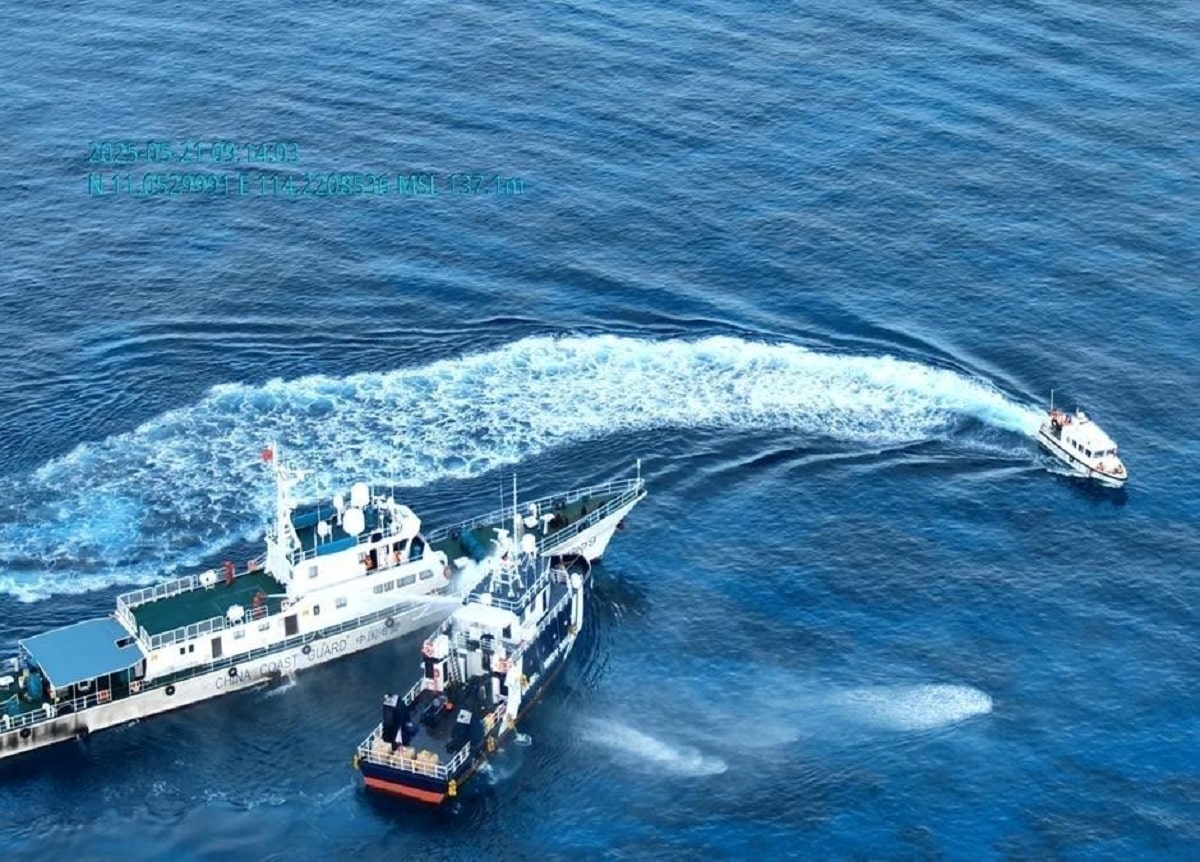No stopping WPS research missions amid China’s aggression, assures BFAR

LATEST BULLYING A China Coast Guard ship (left) cuts into the path of the BRP Datu Sanday of the Bureau of Fisheries and Aquatic Resources on Wednesday morning in the waters near Pag-asa Island in the West Philippine Sea. A smaller Chinese vessel (right) also makes a harassing maneuver. —Photo from the Philippine Coast Guard.
MANILA, Philippines — The Bureau of Fisheries and Aquatic Resources (BFAR) reaffirms its commitment to continue conducting scientific research missions in the West Philippine Sea, the agency’s spokesperson said on Monday.
In an interview on government television, BFAR spokesperson Nazario Briguera said its personnel are undeterred by the May 21 incident in which the agency’s research vessel, BRP Datu Sanday, was sideswiped and blasted twice with water cannons by a Chinese Coast Guard ship while conducting a routine marine scientific research mission near Pag-asa Cay.
“We will not waver in these circumstances. We will continue to carry out our mission in the West Philippine Sea despite the aggressive actions of the Chinese Coast Guard,” he said over “Bagong Pilipinas Ngayon.”
According to Briguera, the BFAR vessel was able to complete its mission despite sustaining physical damage during the water cannon incident, including a dent to its port bow and damage to its smoke stack.
READ: Chinese Coast Guard uses water cannons, sideswipes PH ship in WPS
No BFAR personnel were injured during the encounter, he said.
Full extent of damage
Briguera said BFAR is still assessing the full extent of the damage to the ship, but initial estimates place the cost of repairs between several thousand pesos and a million pesos.
He clarified, however, that the vessel remains seaworthy and that operations will proceed as planned.
According to Briguera, the BRP Datu Sanday was part of BFAR’s ongoing marine scientific research initiative to collect vital data on the condition of marine resources in the WPS, particularly around the disputed cays.
“These missions are crucial. They help us understand the current state of our marine ecosystems and support evidence-based management of our resources,” he said.
He added that findings from previous surveys have noted the presence of coral fragments in some areas, though it remains unclear if these were caused by human activity.
The results from the most recent trip are still being consolidated, he added.
Briguera said the government has launched the Kadiwa ng Bagong Bayaning Mangingisda (KBBM), a mobile support program that directly aids fisherfolk operating in the WPS.
The project, implemented with the help of the Philippine Coast Guard, uses a carrier vessel that brings traders and essential services to fishing grounds, helping reduce post-harvest losses and increase income for local fishermen.
“The good thing about this is that our fishermen no longer have to return to shore to sell their catch. Their fishing season is prolonged and their costs are reduced,” Briguera said./mr
For comprehensive coverage, in-depth analysis, visit our special page for West Philippine Sea updates. Stay informed with articles, videos, and expert opinions.


















